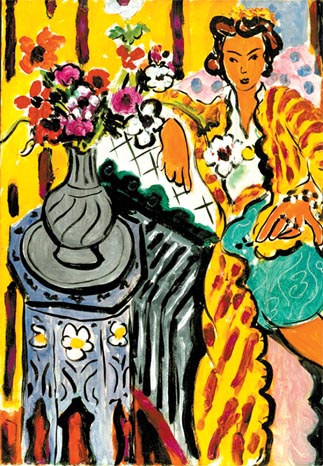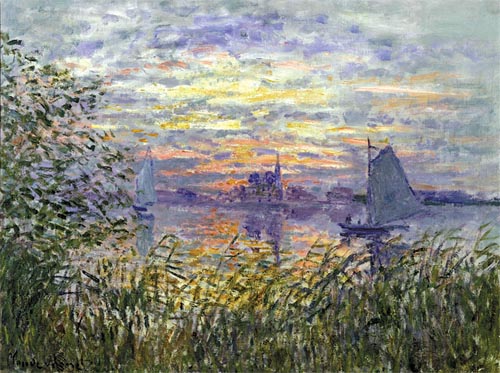European masters revel in freewheeling impressions

Henri Matisse “Yellow Odalisque” 1937 Oil on canvas. Provided by the Philadelphia Museum of Art
Their style of painting was also different. More visible brushstrokes and an emphasis on light made their work colorful and dynamic, making Impressionism one of the most popular movements in art history with the general public.
An exhibition titled “Monet to Picasso: Masterpieces from the Philadelphia Museum of Art” at Hangaram Art Museum at Seoul Arts Center is showing 96 paintings, sculptures and drawings by artists who represented modern art movements in the 19th and 20th centuries, including Impressionism.
The Philadelphia Museum of Art has more than 250,000 artifacts and its Impressionist collection is well known.

Claude Monet “Marine View with a Sunset” 1875 Oil on canvas 49.5 x 65.1 cm
The exhibit is divided into four different sections: Realism featuring the artists including Manet and Courbet; Impressionism and Post-Impressionism including Monet, Renoir, Degas, Rodin, Pissarro and van Gogh; Fauvism, Cubism and Avant-Garde art including Picasso, Matisse, Duchamp, Brancusi and Leger.
The museum’s American collection featuring artists including Alexander Calder, Andrew Wyeth, John Sloan, Charles Demuth, Mary Cassatt and Roy Lichtenstein highlights the dawn of the United States’ art in the early 20th century.
One of the notable pieces in the exhibition is “The Ballet Class” (1880) by Degas, in which a mirror reflects the image of the city landscape, and “Portrait of Mademoiselle Legrand” (1875), in which Renoir catches the girl’s shyness. Her sparking eyes show how much the painter emphasized eyes in his works.
Though the relationship between Legrand and Renoir is unknown, the artist painted many people the two were acquainted with or close to.
Matisse was descended from weavers. Influenced by the beauty and color of fabrics, he used the combination of dynamic colors and patterns in his paintings.
In 1906, he visited North Africa for the first time and was strongly inspired by arabesque patterns, vibrant colors and exotic textiles, as seen in his works on display including “Yellow Odalisque” (1937) and “The Moorish Screen” (1921).
Picasso’s “Woman and Children” (1961) on display is one of his later works. In his later years, he adopted daring styles and colors in his paintings. The painting shows his wife Jacqueline Roque in the center and his two children, Paloma, left, and Catherine. Picasso left numerous portraits of Jacqueline, many of which, like this one, show only one side of her face.
The exhibition continues through March 28, 2010. Hours are 11 a.m. to 7 p.m. every day, except the last Monday of each month.
From Nambu Terminal Station on line No. 3, exit 5, transfer to bus No. 12, and get off at Seoul Arts Center.
Ticket prices are 5,000 won ($4.30) to 11,000 won. For more information, call (02) 580-1300 or visit www.sac.or.kr.
By Limb Jae-un [jbiz91@joongang.co.kr]










with the Korea JoongAng Daily
To write comments, please log in to one of the accounts.
Standards Board Policy (0/250자)